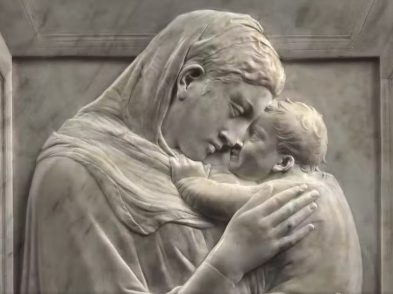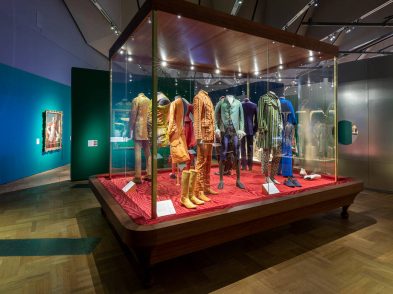When, a century ago, the National Gallery in London bought an impressive altarpiece, the Assumption of the Virgin, it was thought to be by Botticelli. But it turned out to be by Francesco Botticini (1446–98)—an esteemed colleague of Botticelli, as well as Filippo Lippi, Verrocchio and Pollaiolo. Commissioned by Matteo Palmieri in 1475 for his burial chapel in Florence’s S. Pier Maggiore, which was demolished in 1784, until February 14, 2016, the painting is the centerpiece of the exhibition Visions of Paradise: Botticini’s Palmieri Altarpiece at the National Gallery.
Palmieri (1406–75), a true ‘Renaissance man,’ was one of the leading exponents of Florentine humanism. He was a writer, philosopher, historian, statesman and apothecary (his pharmacy, Del Canto alle Rondini in via Pietrapiana, is still in business today). The monumental panel he commissioned from Botticini around 1475 might be best appreciated as his spiritual and cultural testament. In fact, the exhibition of the Assumption of the Virgin at the National Gallery provides new insight into the painting Palmieri intended to serve as his legacy.
Botticini’s painting features a remarkable panorama of Florence and the city’s surroundings. The walled city with its Duomo and bell towers is behind the kneeling Palmieri, wearing his state robes and the ‘Lucco’ on his shoulder. Along with the Arno and surrounding hills, the careful viewer can even make out the Fiesole church and a farm belonging to Palmieri. Opposite him, his widow, Niccolosia, dressed in a Benedictine habit (a homage to the order of S. Pier Maggiore), is also on her knees, behind her farms in the Val d’Elsa hills, her dowry.
More importantly, the painting reflects Palmieri’s spiritual beliefs, which he apparently discussed with Botticini. In the centre, the Apostles marvel at the tomb of the Virgin Mary, filled with lilies; above, Christ receives her in the highest circle of Heaven. Here, a wonderful merry-go-round of angels and saints—the humans incorporated into the angelic ranks—bears witness to the action, a spiritual apotheosis highly praised by Vasari for its pictorial skills.
Palmieri was well known for his view of education and civil society, which he described in his widely read 1429 treatise, Della vita civile (‘On Civic Life’). But in his posthumously published poem, La città di vita (‘The City of Life’), an ambitious work emulating Dante’s Divine Comedy, Palmieri presents a provocative vision. The treatise was deemed heretical for its ideas about the origin of the human soul and the notion of free will. Had Palmieri been alive, he would likely have been burned at the stake; instead, his body was removed by the church, and his tomb left empty. Botticini’s altarpiece is an illustration of Palmieri’s theological concepts: the Paradise, described with the comingling of saints within the ranks of angels, called into question the received concept of the order of universe and the role of mankind.
The current exhibition at the National Gallery does justice to both the painting and its donor. For years it was hung several metres off the ground at the entrance of the museum’s Sainsbury Wing, where few visitors paid attention to it. When Jennifer Sliwka, curator in art and religion, suggested an exhibition, the museum’s newly appointed director, Gabriele Finaldi, who has a deep appreciation for sacred art, welcomed the idea. The exhibition also displays 30 other works on loan from a myriad of international museums, including New York’s Metropolitan Museum of Art and Florence’s Bargello and Biblioteca Laurenziana, all related to Palmieri.








